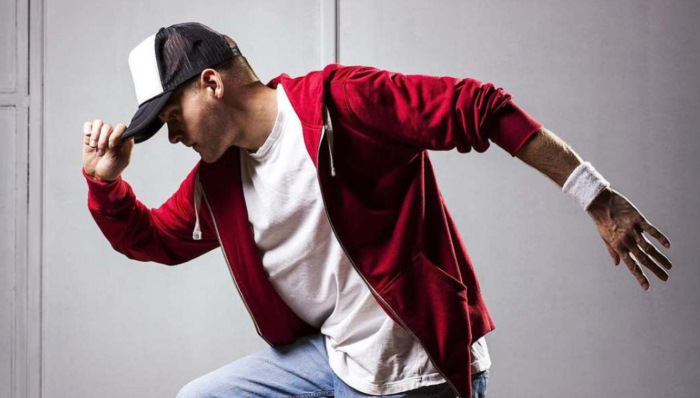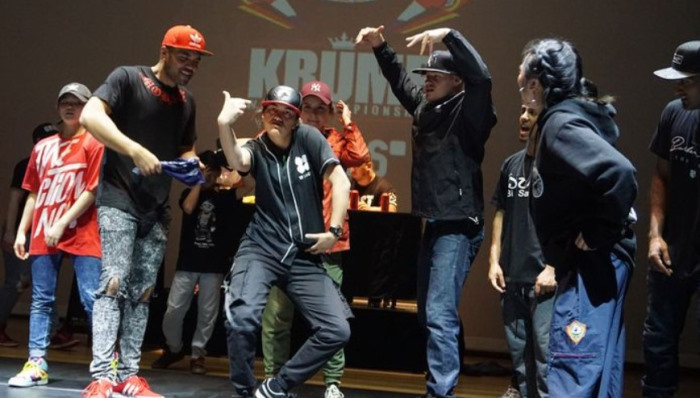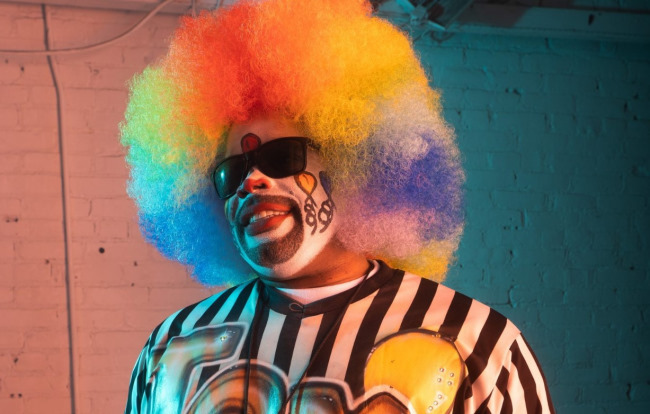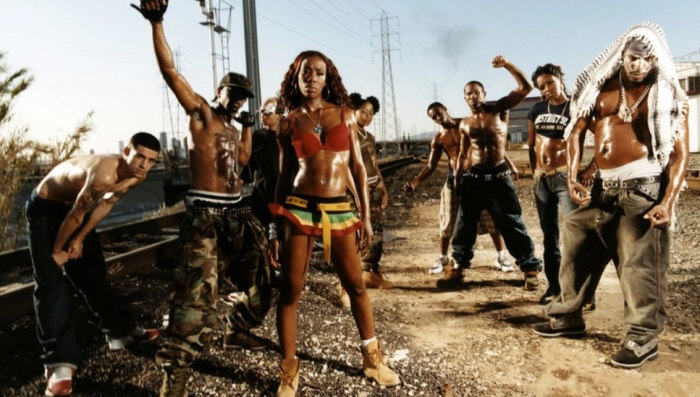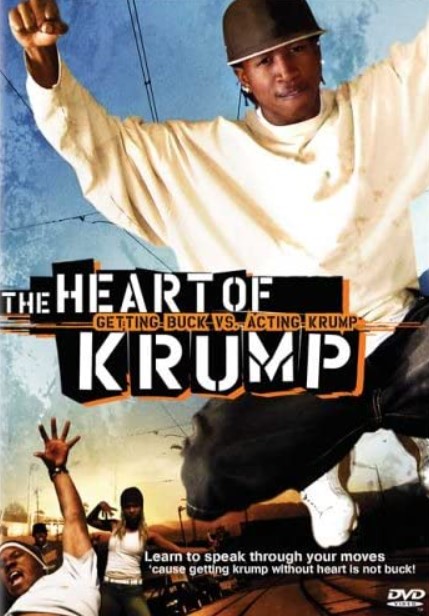Krumping dance is one of the many flavors of street dancing. What sets it apart from all others is that it is probably one of the most energetic and aggressive styles out there.
A dancer has to constantly be on the move and execute a series of tricky, high-speed maneuvers.
Because of its aggressiveness and sharp, powerful movements, Krumping has been mistaken by many as a brutal, thuggish dance. This is far from the truth.
In today’s article, we’ll be delving deep into this dance, from its history, all the way to its techniques and styling. You’ll find that it is a far more peaceful and philosophical dance than what the rumors said!
Table of Contents
Krumping Dance Definition
The word “krump” actually came from the lyrics of a 1990 song.
Later, dancers would turn the word into an acronym for “Kingdom Radically Uplifted Mighty Praise”. The religious slash spiritual connotation is intentional.
Back in the 90s, a lot of young dancers pushed for Krumping to become a faith-based artistic dance style.
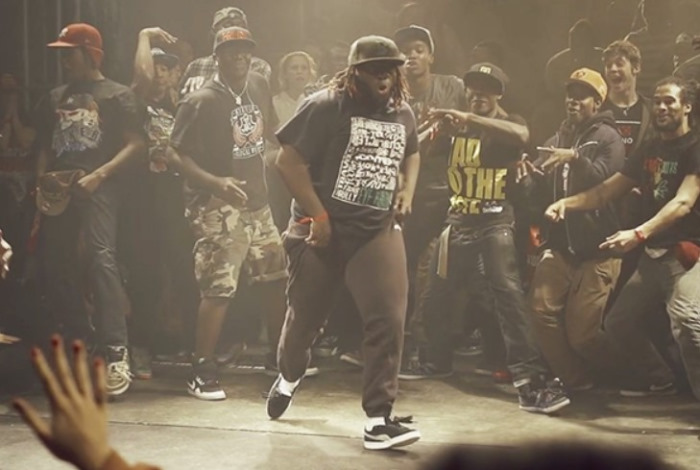
Krumping Dance History
Krumping evolved from a 90s dance style called “Clowning”, which was a dance style invented by Thomas Johnson (Tommy the Clown).
The energetic and fast-paced movement of the dance attracted a lot of young dancers and teenagers. As a result, it became hugely popular among the younger populace of Los Angeles back in the days.
It’s worth noting that in the 90s, Los Angeles was a city that was known for its high crime rates. Young people of color had to live in communities plagued by gang violence, drugs, and crimes days in and days out.
Dancing gave them an outlet to express themselves and served as a temporary reprieve away from the daily violence that they had to go through.
Tommy the Clown and his dance crew regularly performed the dance at children’s birthday parties. Usually, they had their faces painted.
In the 2000s, Ceasare Willis (Tight Eyez) and Jo’Artis Ratti (Big Mijo) developed what’s now known as “Krumping” from the template of “Clowning”.
Originally, the two dancers were part of Tommy the Clown’s band. However, their dance styles were far too aggressive and anger-filled to suit the clowning style.
Eventually, the two separated from the band and went on their own trajectory. Which led them to create Krumping.
Unlike Clowning, which is mostly a fun-centric and lighthearted dance, Krumping is considerably more mature, aggressive, and sharp.
Some even say that each movement of a Krump dancer exudes anger and hatred. Unfortunately, it is how Krumping has gotten such a bad reputation.
Nevertheless, that didn’t stop Krumping from becoming popular among the dancer communities.
At first, Tight Eyez and Big Mijo mostly danced on their own. But as more dancers heard of Krumping and began to practice, the dance style grew its own hierarchies and major Krumping dance battles were organized.
By the late 2000s, many Krump dance crews had formed and prospered (called “fams”). These crews are tightly knitted and their loyalty to one another far exceeds the boundary of the dance floor.
Krumping Dance Characteristics
Originally, Krump was a freestyle dance. Choreographed performances were very rare.
However, these days, Krump performances are being increasingly choreographed.
As the key characteristics of Krump are aggressiveness and power, dancers must put all of their strength into each move.
The philosophy of Krumping is that the dancer is trying to push out all of the negative emotions (hatred, sadness, and so on) from their core.
So, dancers must express violence and rage through their own jerky and fast-paced movements.
Krumping Dance Moves
Despite Krump being a freestyle dance, there are many popular moves that you’ll often see dancers use in their performances.
For example, jumps and swings are very common. You’ll also see a few chest popping and ground stompings, too.
Here are a few popular moves that you can check out. Most of them are fairly basic and easy to do. So, if you want, you can try (and maybe practice) right at home!
Arm Swings
Start with your arms straight. Then, one arm brushes upward along the length of your torso and stops at the shoulder. Quickly strike outward as violently as you can.
The key to executing a good arm swing is control. Yes, there should be violence in your movement, but it shouldn’t be done as if it’s swung with blind rage.
Think of it like a boxer’s jab: powerful, yet controlled. Avoid flailing your arms.
When you swing your arm, your hand can do anything, like balling into a fist or straighten out into a blade. Creativity is the point here. You can do anything as long as it fits the spirit of the music!
Chest Pops
The chest pop is simple but extremely effective.
Push your chest outward, then retract it again. Imagine someone grabbing the front of your shirt and pulling your chest outward.
Usually, dancers will perform chest pops to the rhythm of the music. They will also blend other moves into the pops, too, like a stomp.
Chest Locks
Chest locks are very similar to chest pops. However, the movement is “isolated” to the chest only. Meaning when you pop your chest outward, it should be the only part of your body to move.
Chest locking can be a bit tricky to learn, especially if this is your first time dancing.
But once you’ve mastered it, you will be able to master many more techniques, like the Cobra King.
Wobbles
The name speaks everything about this move. Your entire body would “wobble” and gyrate to the rhythm of the music.
Shoulder Rolls
Shoulder movements are a very important part of any Krump routine. One of the most basic skills that you can learn is the shoulder roll.
Jabs
Jabs, as its name suggests, took its root in boxing. Strike out with your hands quickly and fiercely, then retract. Do a series of rapid strikes like you’re fighting someone!
But, just like the arm swings, you need to maintain control of your movement the entire time.
Jumps
Jumps aren’t exactly a singular move. It’s a broad term that refers to all of the movements where your feet are lifted off of the ground.
While you’re in the air, it boils down to your creativity and improvisational skill to make your jumps as aesthetically pleasing as possible.
Stomps
Stomps are moves where your feet hit the ground at high speed. Your stomps should be powerful, reflecting the philosophy of Krumping.
For beginning Krumpers, there are three types of stomps that you need to master.
- Lift stomp
Raise one of your legs up in the air, then slam it back down to the ground.
It’s a simple move. The only thing that you need to pay attention to is ensuring your knee is at a 90° angle.
- Kick stomp
Straighten your leg, kick it outward, then retract it and slam your foot against the ground.
- Slide stomp
Slide your foot against the ground (can be forward or sideward). Then, when you retract your foot, end the movement with a stomp.
Krumping Dance Costumes
To dress for a Krumping battle, you need to consider both the aesthetic and the functional aspects.
Generally, most Krumpers go for loose, baggy clothing. The frenetic and often extreme moves that they perform don’t allow for skintight or restrictive clothes.
In terms of footwear, popular choices among Krumpers are Timberland boots and high-top sneakers. They look great, and most importantly, they’re comfortable to dance in.
But the most important part of Krumping “fashion” isn’t really the clothes or the shoes. Instead, it’s the face paint.
Many Krumpers paint their faces in tribal patterns as a way to reconnect with their African roots. Meanwhile, many others use face paints as a way to assume someone else’s identity.
Painting their faces allows them to escape their day-to-day life as well as their identity by becoming someone else, from a different time, and a different place.
It’s a poetic, artistic form of escapism that some people termed as “secret fantasies”.
Remember, despite Krumping being a street dance, its philosophy and presentation are spiritual.
Famous Krumping Dancers
Thomas Johnson (Tommy the Clown)
Thomas Johnson (Tommy the Clown) is the person who invented the predecessor to krumping: clowning.
As we have explained earlier, Clowning is a dance style that, unlike Krumping, leans more toward being fun, entertaining, and expressive. It’s also usually performed with face painting.
Despite the two being so different from one another, Clowning was instrumental to the creation of Krumping by serving as its template.
Without Tommy the Clown’s work, Krumping would have never existed!
Caesare Willis (Tight Eyez)
Caesare LaRon Willis, or Tight Eyez, was one of the co-inventors of Krumping. He was originally a part of Tommy the Clown’s dance crew and was a clown dancer.
In the 2000s, he and his partner, Jo’Artis Ratti (Big Mijo), came up with Krumping as a derivative of Clowning.
For the past couple of years, Tight Eyez has been making documentaries about Krumping (“RIZE”), directing movies, and entering competitions to spread Krumping to the wider public.
Notably, Tight Eyez and his crew, the Street Kingdom, were featured on America’s Best Dance Crew Season 6.
Jo’Artis Ratti (Big Mijo)
Jo’Artis Ratti was born in LA, California. The harsh, crime-ridden environment of the city was part of the inspiration that drove him to create Krumping with Caesare Willis (Tight Eyez).
For over 20 years, he has been a teacher of Krumping as well as a traveling dancer.
Big Mijo has appeared alongside several famous pop artists like Rita Ora, Madonna, and Mariah Carey.
He graduated from the University of Idaho with a bachelor’s degree in Communication and a Minor in Theater Arts.
Krump Music
Krumping – being a type of street dance – is intimately connected with hip-hop music. It is the most popular genre of music used for Krumping.
Krumpers based their moves on the mood, rhythm, and tempo of the music. Thus, music is a crucial part of any Krumping practice or battle.
Most of the music that’s chosen for Krumping is usually upbeat and extremely fast-paced.
If you want to listen to “classic” buck music, try songs by Tha J-Squad. They’re credited as the pioneers of Krumping music and many of their tracks are still hugely influential among Krumping communities today.
Krumping Dance Battle/Competition
If you plan on going professional, you will need to find yourself a crew. Krumpers usually come together and form a tight-knit crew (fams).
The most experienced Krumpers in the group will take the mantle of mentorship. This person is called the “Big homie”. New inductions into the family or inexperienced Krumpers are called “Lil homies”.
The Big homies will take all of the Lil homies under their wings and tutor them for the battles and competitions ahead of the entire crew.
There are usually many different competitions and informal battles being hosted all year long, depending on how active your local Krumping groups are.
However, none are bigger and more important to a Krumper than The Battle Zone.
The Battle Zone was created by Tommy the Clown as a place where Clown dancers and Krumpers can “battle” one another. It’s basically a rite of passage for many aspiring Krumpers.
If you win a battle here, you and your crew will gain the respect of the community. But if you lose … well, try again at the next Battle Zone.
Krumping Dance Movie
Rize
Rize is a 2005 documentary directed by David LaChapelle. It’s the definitive movie to watch if you would like to know more about the history of Clowning and Krumping.
The documentary is going to give you a deeper, more intimate look at the culture and all of the competitions surrounding the two dance styles.
Rize won’t just tell you how krumping began, it will also give you a first-person view into the lives of many famous krumpers.
Their stories, one told through misfortunes and tough circumstances, are nothing short of inspirational.
The Heart of Krump
The Heart of Krump follows the stories of the pair of dancers that created and propagated krumping to the wider public: Tight Eyez and Big Mijo.
Similar to Rize, The Heart of Krump also goes back to the early 2000s to discover the roots of krumping.
It also serves as a biographical piece on Tight Eyez and Big Mijo, giving you a look into their lives as dancers and educators.
FAQs
What Is the Difference Between Hip-Hop and Krumping?
Krumping is different from all other dance styles, including hip-hop, because of its aggressiveness and it is danced to extremely fast-paced music.
Meanwhile, hip-hop’s tempo is typically slower and its moves tend to focus more on the acrobatic facet of dancing than expressiveness.
What Is the Difference Between Krumping and Clowning?
The two share many similarities, but there is also a world of differences between them.
Krumping is more mature, its pacing is more rapid, and of course, its moves pack a lot more power and “violence”.
Clowning, on the other hand, is more easy-going and more fun-centric. After all, it was meant to be a dance that serves as an introduction to dancing for kids and young people.
Why Is Krumping a Dance Style Which Releases Anger?
It’s part of the dance’s philosophy.
Krumping is seen as a way to spiritually release all of the negative emotions that are contained within you (hence all of the violence and aggressive movements).
It’s not only a way to express yourself, Krumping is also a good way to de-stress and let loose!
Final Words
Krumping dance is a spectacular street dance that, if you aren’t interested in practicing, is still worth knowing.
As one of the more popular dance styles in the street dancing movement, Krumping has become an integral part of the dancing culture.
But if you’re interested in practicing, scout out your local areas to see if there are any dance crews, workshops, or dance studios that can teach you!
It’s completely possible to practice and learn by yourself, of course. But it’s always better to have an instructor on hand to fix your techniques and prevent you from injuring yourself.
Dance on, Krumper!
